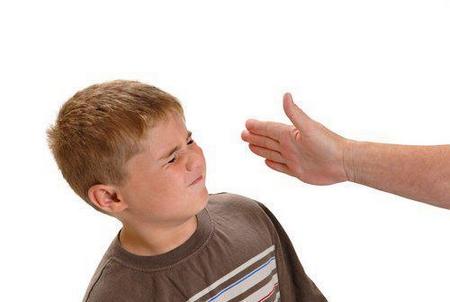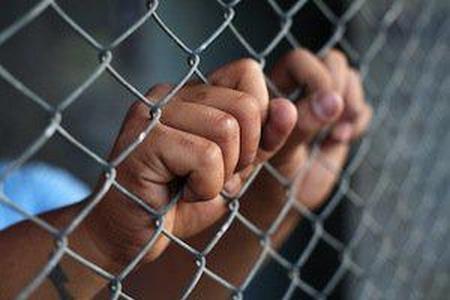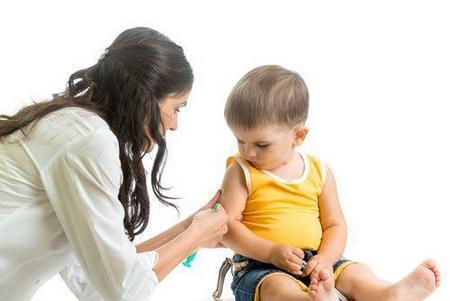Recent Blog Posts
Corporal Punishment: The Thin Line between Child Discipline and Child Abuse
 The corporal punishment/child abuse debate was re-sparked in the last six months due to the widespread coverage one football player received with regards to injuries he perpetrated against his son while inflicting corporal punishment.The authorities found, however, that he had crossed the line, that he went beyond providing punishment to his child, but inflicted serious physical harm against him. The line drawn between corporal punishment and child abuse is a very thin one, and many states are reviewing their current laws to see whether it is possible to make the line more pronounced and more likely to protect the rights of children and the rights of parents to be free of government intervention in how to raise a family.
The corporal punishment/child abuse debate was re-sparked in the last six months due to the widespread coverage one football player received with regards to injuries he perpetrated against his son while inflicting corporal punishment.The authorities found, however, that he had crossed the line, that he went beyond providing punishment to his child, but inflicted serious physical harm against him. The line drawn between corporal punishment and child abuse is a very thin one, and many states are reviewing their current laws to see whether it is possible to make the line more pronounced and more likely to protect the rights of children and the rights of parents to be free of government intervention in how to raise a family.
Protect Yourself Against UM/UIM Drivers
Warning: stripos(): Offset not contained in string in /home/ocvaws/public_html/system-joomla-shared-core/components/com_easyblog/easyblog.php on line 6
Legislators Look to Add Motorcycle Safety to Drivers Ed
Warning: stripos(): Offset not contained in string in /home/ocvaws/public_html/system-joomla-shared-core/components/com_easyblog/easyblog.php on line 6
Postnuptial Agreements: The Business of Going into Business with Your Spouse
 U.S. residents are known for being extremely entrepreneurial and innovative. Now, more than ever, the concept of start-ups and crowdfunding/sourcing are becoming increasingly popular as this allows for everyday people to take an idea and, with very little investment, turn it into a business venture with the opportunity for growth.
U.S. residents are known for being extremely entrepreneurial and innovative. Now, more than ever, the concept of start-ups and crowdfunding/sourcing are becoming increasingly popular as this allows for everyday people to take an idea and, with very little investment, turn it into a business venture with the opportunity for growth.
The well-known adage is that personal relationships and business never mix. But more and more, power couples are surfacing and becoming successful specifically because they are functioning as a marital unit. More likely than not, having your spouse be your business partner creates a situation where any profit or loss is shared with the person who you trust the most. As many couples who run profitable businesses will attest, it is all about communication, creating ground rules, and sometimes a postnuptial agreement for more complex decisions for the marriage and business.
What is a “Particular Social Group?”
 In the United States, those applying for asylum must qualify under the 1951 Geneva Convention definition of a refugee. This means that they must be able to prove a “well-founded fear” of returning to their home country because of their race, religion, nationality, political opinion, or membership in a particular social group (PSG). While four of these grounds are fairly straightforward, the ‘membership in a particular social group’ criteria is often used as a catch-all of sorts. Its definition remains disputed in U.S. law.
In the United States, those applying for asylum must qualify under the 1951 Geneva Convention definition of a refugee. This means that they must be able to prove a “well-founded fear” of returning to their home country because of their race, religion, nationality, political opinion, or membership in a particular social group (PSG). While four of these grounds are fairly straightforward, the ‘membership in a particular social group’ criteria is often used as a catch-all of sorts. Its definition remains disputed in U.S. law.
General Definition
Generally speaking, many judges define a particular social group as a group of people viewed as a threat by a government based on one characteristic they all share, usually an immutable (unchangeable) physical or mental trait or an experience. Examples in the past have included homosexuals, former gang members or people of a shared ethnicity. One trend that seems to help define the term further is that the characteristic shared must not be subjective. For example, “rich people” would be a poor attempt to define a particular social group, because “rich” is entirely subjective.
Another factor that many judges seem to consider is if the group is visible as a PSG within its own society. Victims of rape at the hands of soldiers may be a particular social group in the sense that they share a characteristic which is not transient or subjective, but they are often invisible in their home society. If a group is invisible in its home society, there is no real reason for them to fear persecution. In short, a particular social group is most likely to be recognized if it is comprised of people who share some kind of immutable characteristic (experience, ethnicity, sexual orientation, etc.), and if it is at least somewhat visible in the home country.
Application in the System
The U.S. immigration system has only just begun to give credence to many particular social groups that one might assume were already classified as such. However, many cases do not reach the courts or are not appealed to a court where a final ruling can be made. There remains a fair amount of debate as to what actually constitutes a PSG, and rulings have been inconsistent, but the definition is widening, which can be a salvation for some that would otherwise have found it difficult to gain asylum.
The most recent example is in September 2014, when a court ruled in Matter of A-R-C-G- that female survivors of domestic violence in Guatemala who were “unable to leave their relationships” constituted a PSG for asylum purposes. While the Board of Immigration Appeals made it clear that particular social group status would still be determined on a case by case basis, A-R-C-G- makes it easier for those in gender-based PSGs to qualify, provided there is enough governmental involvement (or lack of control over those involved) in their persecution.
Contact an Experienced Asylum Attorney
It is always a good idea to apply for asylum under as many grounds as you think are possible, but “particular social group” has always been a bit of a wild card. Even with trends now changing to be a little more clearly defined for the potential asylee, having competent representation is critical. The Chicagoland immigration attorneys at Mevorah & Giglio Law Offices are ready, willing, and able to put the benefit of their years of experience to work for you. Contact us today to discuss your options.
New Study Reveals the Dangers of Drowsy Driving
Warning: stripos(): Offset not contained in string in /home/ocvaws/public_html/system-joomla-shared-core/components/com_easyblog/easyblog.php on line 6
One Killed in Fatal Metra-Car Accident in Woodstock
Warning: stripos(): Offset not contained in string in /home/ocvaws/public_html/system-joomla-shared-core/components/com_easyblog/easyblog.php on line 6
Immigration Detainers: A Federal Overreach?
 Very often, Immigration and Customs Enforcement (ICE) solicits assistance from state and local police agencies in attempts to catch up with undocumented immigrants. When this occurs, a person may be placed under an immigration detainer. This practice has been condemned by activists as extrajudicial, and various states are in the process of eliminating them. However, detainers are still used in many other states.
Very often, Immigration and Customs Enforcement (ICE) solicits assistance from state and local police agencies in attempts to catch up with undocumented immigrants. When this occurs, a person may be placed under an immigration detainer. This practice has been condemned by activists as extrajudicial, and various states are in the process of eliminating them. However, detainers are still used in many other states.
How Detainers Work
If a state or local law enforcement agency (LEA) receives a detainer request, it is intended to advise the local LEA that they have someone in custody that is of interest to ICE. It is also intended to serve as notice that ICE would like to take custody of the person after the local LEA has exhausted their time with them. Sometimes, ICE requests that the LEA extend their hold on the person if possible. If the detainer is complied with, ICE is then able to take custody of the person after the LEA’s time with them expires.
This is not, despite belief to the contrary, a requirement. State agencies are not bound by law to obey requests for detainers, and indeed, the LEA may not hold anyone beyond 48 hours unless they are arrested. Detainers may also only be placed on non-U.S. citizens; any U.S. citizen who finds him or herself under detainer may have a case for false imprisonment.
Pushback from State Agencies
While the system has no doubt contributed to the arrest of a number of undocumented immigrants, it has also created very real problems for the people it is supposed to protect. U.S. citizens have been held on immigration detainers before, which is a violation of the Fourth Amendment—one cannot be held in detention while a court tries to figure out if the detention is appropriate or not.
Allegations of racial profiling have also been made; it is alleged in several suits currently pending that ICE officials unjustly held United States citizens or immigrants with documentation, usually of Latino origin, on detainer solely to ‘run checks’ or investigate their immigration status. This is unacceptable under both the Fourth Amendment and the Fourteenth.
Also, certain state agencies have simply stopped cooperating with ICE detainers, citing the excessive drain on their own, far more limited resources and personnel. On his way out of office in January, departing governor Pat Quinn issued an executive order prohibiting state law enforcement agencies from complying with ICE detainers. Such an order, while somewhat controversial, is entirely within the scope of the governor’s power.
Governor Quinn argued that one of the main issues with the detainer system is that it discourages the undocumented from interacting with police—even if they are not culpable in the crime in question—because they fear deportation. The argument can be made that if the undocumented community is entirely estranged from law enforcement, it may not only adversely affect crime rates within the community, but it can also make it harder to reach the undocumented in non-criminal matters as well.
Get Help From a Professional
If you or a loved one have been the subject of an immigration detainer—rightly or wrongly—having a good attorney on your side can make all the difference. The Chicagoland immigration attorneys at Mevorah & Giglio Law Offices have years of experience in these matters, and we are ready to help you. Contact us today at 630-932-9100.
Child Vaccination Debate: Should Parents Be Held Liable for Not Vaccinating Their Children?
 As a parent, you make decisions for your child on a daily basis. Whether you are the sole custodian of your child, or share joint custody, there are a lot of decisions that need to be made with regards to your child’s education, upbringing, health, etc. But what happens when your decisions regarding your child’s upbringing and health have a negative impact on others? This is the question at the center of the child vaccination debate, especially in light of the measles outbreak at Disneyland where 52 cases of infection originated.
As a parent, you make decisions for your child on a daily basis. Whether you are the sole custodian of your child, or share joint custody, there are a lot of decisions that need to be made with regards to your child’s education, upbringing, health, etc. But what happens when your decisions regarding your child’s upbringing and health have a negative impact on others? This is the question at the center of the child vaccination debate, especially in light of the measles outbreak at Disneyland where 52 cases of infection originated.
One Parent’s Decision Can Pose a Threat to the Rest
At the center of this epidemic is the debate of whether there should be criminal or civil charges for not vaccinating your child, and for the child infecting another child who later dies as a result. The reasoning behind criminal and/or civil liability attaching to these parents is that their decision for raising their child poses a significant threat to the public as a whole.
Illinois Traffic Fatalities Reach New Low
Warning: stripos(): Offset not contained in string in /home/ocvaws/public_html/system-joomla-shared-core/components/com_easyblog/easyblog.php on line 6
 English,
English,
 Spanish,
Spanish,
 Polish,
Polish,
 Urdu
Urdu













 Make a Payment
Make a Payment



